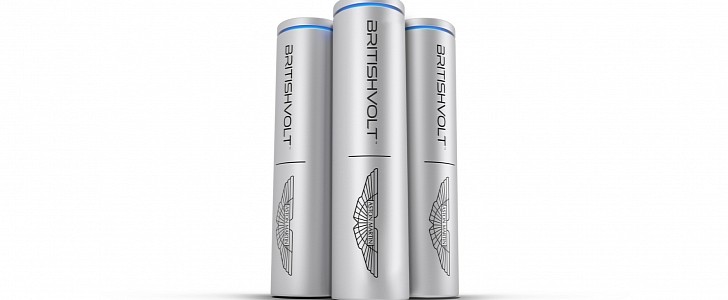By 2030, Aston Martin plans to electrify its “core portfolio.” Far from being a commitment to sell only electric cars, it shows that even the centenarian British brand is under pressure to go electric. To get there, Aston Martin announced it partnered with Britishvolt to develop high-performance cells.
At this point, we have no idea what the British companies want to achieve with the current chemistries available. There’s very little possibility that they will come up with a breakthrough involving NMC or NCA. If they manage to offer something really special, it will probably be similar to what Koenigsegg already has available.
Christian von Koenigsegg said that he buys cells that work like ultracapacitors: they charge and release energy much faster than regular ones. Used in the Regera, these batteries stand up to 100C and cost 20 times more. A 70-kg battery pack delivers 500 kW almost immediately. If Aston Martin and Britishvolt want to develop something similar, we wonder why they will only be available in 2025.
What is expected to happen by then are solid-state cells from QuantumScape. The American startup said that “an international luxury automotive company” was among its first customers, and one of our bets was that Aston Martin could be that automaker. The deal with Britishvolt may indicate that not to be the case. If it was, why would Aston Martin even care to develop high-performance cells with the current chemistries around?
To be fair, the two companies did not explicitly rule out solid-state technology in these new high-performance batteries. However, if that were the case, they would probably mention that the goal was this.
Instead, Aston Martin and Britishvolt said they created “a joint research and development team” whose purpose is to “design, develop, and industrialize battery packs, including bespoke modules and a battery management system.”
The crucial point of what they had to tell was that they would “work together to maximize the capability of special cylindrical high-performance cells being developed by Britishvolt.” In other words, Britishvolt is already working on these cells independently.
On January 24, Britishvolt announced it is working on a “high nickel” ternary chemistry, with “increased energy density” that promises “greater performance and range.” The company did not disclose how much more energy density this battery offers nor any other element to support its claims.
On January 28, the company disclosed that it had signed a similar MoU (Memorandum of Understanding) with Lotus. Unfortunately, it also did not offer any objective element about these cells for us to expect much better performance or range from them. We only know that they will be cylindrical and ternary, which is pretty much what we already have in most electric cars for sale.
We’ll keep an eye on Britishvolt to wait for more reasons to be enthusiastic about what it has to offer. Until it does that, we think that SES and QuantumScape hold more promising propositions to improve electric cars. Aston Martin and Lotus should also want to talk to these companies – even if they are not British.
Christian von Koenigsegg said that he buys cells that work like ultracapacitors: they charge and release energy much faster than regular ones. Used in the Regera, these batteries stand up to 100C and cost 20 times more. A 70-kg battery pack delivers 500 kW almost immediately. If Aston Martin and Britishvolt want to develop something similar, we wonder why they will only be available in 2025.
What is expected to happen by then are solid-state cells from QuantumScape. The American startup said that “an international luxury automotive company” was among its first customers, and one of our bets was that Aston Martin could be that automaker. The deal with Britishvolt may indicate that not to be the case. If it was, why would Aston Martin even care to develop high-performance cells with the current chemistries around?
To be fair, the two companies did not explicitly rule out solid-state technology in these new high-performance batteries. However, if that were the case, they would probably mention that the goal was this.
Instead, Aston Martin and Britishvolt said they created “a joint research and development team” whose purpose is to “design, develop, and industrialize battery packs, including bespoke modules and a battery management system.”
The crucial point of what they had to tell was that they would “work together to maximize the capability of special cylindrical high-performance cells being developed by Britishvolt.” In other words, Britishvolt is already working on these cells independently.
On January 24, Britishvolt announced it is working on a “high nickel” ternary chemistry, with “increased energy density” that promises “greater performance and range.” The company did not disclose how much more energy density this battery offers nor any other element to support its claims.
On January 28, the company disclosed that it had signed a similar MoU (Memorandum of Understanding) with Lotus. Unfortunately, it also did not offer any objective element about these cells for us to expect much better performance or range from them. We only know that they will be cylindrical and ternary, which is pretty much what we already have in most electric cars for sale.
We’ll keep an eye on Britishvolt to wait for more reasons to be enthusiastic about what it has to offer. Until it does that, we think that SES and QuantumScape hold more promising propositions to improve electric cars. Aston Martin and Lotus should also want to talk to these companies – even if they are not British.














